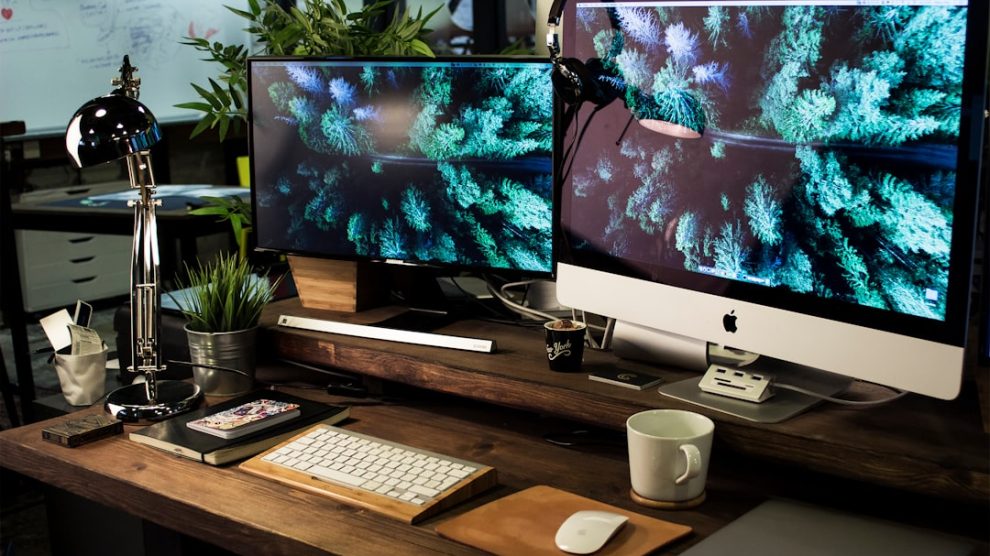Stoicism, a philosophical school that originated in ancient Greece, has gained renewed interest in contemporary society, particularly as individuals grapple with the complexities of modern life. Founded by Zeno of Citium in the early 3rd century BCE, Stoicism teaches the development of self-control and fortitude as a means to overcome destructive emotions. The core tenets of Stoicism emphasize the importance of virtue, wisdom, and rationality, encouraging individuals to focus on what is within their control while accepting what is not.
This philosophy posits that true happiness comes from living in accordance with nature and reason, rather than being swayed by external circumstances or fleeting pleasures. At its heart, Stoicism advocates for a life of purpose and resilience. It encourages practitioners to cultivate an inner strength that allows them to navigate life’s challenges with grace and composure.
The teachings of prominent Stoics such as Seneca, Epictetus, and Marcus Aurelius provide timeless insights into human behavior and the nature of existence. Their writings emphasize the significance of mindfulness, self-reflection, and the pursuit of wisdom as essential components of a fulfilling life. In an age characterized by rapid technological advancements and constant connectivity, the principles of Stoicism offer a valuable framework for individuals seeking to maintain balance and clarity amidst the chaos.
Key Takeaways
- Stoicism is an ancient philosophy focused on personal virtue, resilience, and self-control.
- Digital overload can lead to decreased productivity, increased stress, and reduced mental clarity.
- Digital minimalism promotes intentional and mindful use of technology for improved well-being.
- Applying stoic principles to digital minimalism involves practicing self-discipline and focusing on what is within our control.
- Practical tips for digital minimalism include setting boundaries, decluttering digital spaces, and prioritizing meaningful activities over mindless scrolling.
The Pitfalls of Digital Overload
In today’s hyper-connected world, digital overload has become a pervasive issue that affects individuals across all demographics. The incessant barrage of notifications, emails, social media updates, and news alerts can lead to a state of perpetual distraction. This constant engagement with digital devices not only fragments attention but also diminishes the quality of interpersonal relationships and personal well-being.
Research indicates that excessive screen time is linked to increased levels of anxiety, depression, and stress, as individuals struggle to keep pace with the demands of their digital lives. Moreover, digital overload can create a false sense of urgency that compels individuals to respond immediately to every ping or alert. This reactionary behavior undermines the ability to engage in deep work or meaningful reflection.
The phenomenon known as “FOMO” (fear of missing out) exacerbates this issue, as individuals feel compelled to stay connected to social media platforms to avoid being left out of conversations or trends. Consequently, this leads to a cycle of distraction that not only hampers productivity but also erodes mental clarity and focus. The challenge lies in recognizing these patterns and understanding how they detract from one’s overall quality of life.
The Benefits of Digital Minimalism

Digital minimalism emerges as a counterbalance to the overwhelming nature of digital overload. This philosophy advocates for a more intentional approach to technology use, emphasizing quality over quantity. By adopting digital minimalism, individuals can reclaim their time and attention, allowing for deeper engagement with both their personal and professional lives.
The practice encourages users to evaluate their digital habits critically and eliminate unnecessary distractions that do not contribute to their values or goals. One significant benefit of digital minimalism is the enhancement of mental well-being. By reducing the time spent on social media or mindless browsing, individuals can experience decreased anxiety and improved mood.
Studies have shown that taking breaks from technology can lead to increased feelings of happiness and fulfillment. Furthermore, digital minimalism fosters a greater sense of presence in daily life. When individuals consciously choose how they engage with technology, they are more likely to cultivate meaningful relationships and experiences that enrich their lives.
This intentionality not only enhances personal satisfaction but also promotes a more profound connection with the world around them.
Applying Stoic Principles to Digital Minimalism
The intersection of Stoicism and digital minimalism offers a powerful framework for navigating the complexities of modern technology use. Stoic principles can guide individuals in making conscious choices about their digital consumption, helping them align their actions with their values. One key tenet of Stoicism is the distinction between what is within our control and what is not.
By applying this principle to technology use, individuals can focus on managing their responses to digital stimuli rather than attempting to control external factors such as social media algorithms or the behavior of others online. Additionally, Stoicism emphasizes the importance of self-discipline and moderation. In the context of digital minimalism, this translates into setting boundaries around technology use.
For instance, individuals can establish specific times for checking emails or social media, thereby creating a structured approach that minimizes impulsive behavior. By practicing self-discipline in their digital interactions, individuals can cultivate a sense of agency over their time and attention. This aligns with the Stoic belief that true freedom comes from mastering one’s desires and impulses rather than being enslaved by them.
Practical Tips for Digital Minimalism
Implementing digital minimalism requires practical strategies that can be integrated into daily life. One effective approach is to conduct a digital declutter. This involves assessing all digital devices and applications to identify those that add value versus those that create distractions.
Individuals can start by deleting unused apps, unsubscribing from unnecessary email lists, and curating their social media feeds to include only accounts that inspire or educate them. This process not only reduces clutter but also creates a more focused digital environment. Another practical tip is to establish “tech-free” zones or times within one’s daily routine.
For example, designating certain hours in the evening as screen-free time can encourage more meaningful interactions with family or friends. Additionally, engaging in hobbies or activities that do not involve screens—such as reading, exercising, or practicing mindfulness—can help restore balance and foster creativity. By intentionally creating space away from technology, individuals can enhance their overall well-being and cultivate a deeper connection with themselves and others.
Overcoming Challenges and Obstacles

Despite the clear benefits of digital minimalism, individuals may encounter various challenges when attempting to implement these practices in their lives. One common obstacle is the ingrained habit of reaching for devices during moments of boredom or discomfort. This reflexive behavior can be difficult to break, as it often serves as a coping mechanism for stress or anxiety.
To overcome this challenge, individuals can practice mindfulness techniques that encourage awareness of their impulses and promote healthier responses to discomfort. Another significant hurdle is societal pressure to remain constantly connected. In many professional environments, there is an expectation for immediate responsiveness to emails or messages, which can create anxiety around disconnecting from technology.
To address this issue, individuals can communicate their boundaries clearly with colleagues and friends, setting expectations around response times. By fostering an understanding that it is acceptable to take breaks from technology, individuals can create a supportive environment that encourages digital minimalism.
Cultivating Focus and Mental Clarity
The pursuit of focus and mental clarity is essential in an age where distractions abound. Digital minimalism provides a pathway toward achieving this clarity by reducing cognitive overload and allowing for deeper concentration on tasks at hand. One effective strategy for cultivating focus is the practice of time-blocking—allocating specific periods for focused work without interruptions from digital devices.
This technique not only enhances productivity but also fosters a sense of accomplishment as individuals complete tasks without the constant pull of notifications. In addition to time-blocking, incorporating mindfulness practices into daily routines can significantly enhance mental clarity. Techniques such as meditation or deep-breathing exercises help individuals center themselves and reduce anxiety associated with digital distractions.
By dedicating time each day to mindfulness practices, individuals can train their minds to remain present and engaged in their activities. This heightened awareness not only improves focus but also contributes to overall emotional well-being.
Embracing a Stoic Mindset in the Digital Age
Embracing a Stoic mindset in the digital age involves recognizing the power of choice in how one engages with technology. By internalizing Stoic principles such as acceptance, self-discipline, and rationality, individuals can navigate the complexities of modern life with greater ease and resilience. This mindset encourages individuals to view challenges—such as digital overload—not as insurmountable obstacles but as opportunities for growth and self-improvement.
Furthermore, adopting a Stoic perspective allows individuals to cultivate gratitude for the present moment rather than becoming preoccupied with what they lack or what others possess online. By focusing on personal values and priorities rather than external validation through social media likes or shares, individuals can foster a deeper sense of fulfillment in their lives. Ultimately, integrating Stoic principles into daily practices around technology use empowers individuals to lead more intentional lives characterized by clarity, purpose, and emotional well-being amidst the distractions of the digital world.
FAQs
What is digital minimalism?
Digital minimalism is a philosophy that advocates for reducing the time and attention spent on digital devices and platforms in order to focus on more meaningful and intentional activities.
What are the benefits of practicing digital minimalism?
Practicing digital minimalism can lead to improved focus, reduced stress and anxiety, better time management, increased productivity, and a deeper connection to the present moment and real-life relationships.
How can one incorporate digital minimalism into their daily life?
Incorporating digital minimalism into daily life can involve setting boundaries for device usage, decluttering digital spaces, prioritizing offline activities, and being mindful of the impact of digital consumption on mental well-being.
What are some practical tips for reclaiming focus through digital minimalism?
Some practical tips for reclaiming focus through digital minimalism include turning off non-essential notifications, scheduling designated times for checking emails and social media, using digital tools mindfully, and engaging in activities that promote deep concentration and presence.
Is digital minimalism suitable for everyone?
Digital minimalism can be beneficial for individuals who feel overwhelmed by the constant demands of digital technology and desire a more balanced and intentional approach to their digital lives. However, the extent to which one practices digital minimalism may vary based on personal preferences and lifestyle needs.









Add Comment